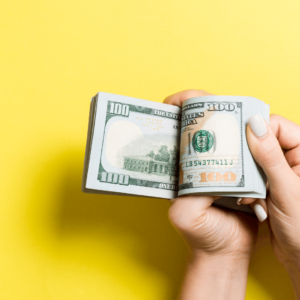
Every year, some of us write down our New Year’s resolutions. Sometimes they are vague but auspicious, like “save more money.” Nice thought, but what are the details? If you’re in debt, does it make sense for you to save money, or should you focus on paying your bills?
Basically, goals and resolutions need a little bit of prep work. Before you can start eating healthy, you need to go to the store and buy healthy food. Before you start saving money or investing your money, you need to make sure you’re financially ready.
If amping up your investing game is one of your goals, here are a few things you should probs do before jumping on the investing train.
Investing Prep Check-List
1. Build Emergency Fund
Emergency funds are for…emergencies. It’s hopefully not necessary to say that, but in case you haven’t had your coffee yet, there you go.
Think of your emergency fund as a bundle of money that will support you if you suddenly break your leg, lose your job, or experience a major life change. It’s enough money to reduce panic and pay your living expenses while you deal with life’s curveballs.
Since you don’t want your money tied up when you need it, keep your emergency fund in cash. Aim for about 3 to 6 months of salary.
2. Eliminate High-Interest Debt
Credit card debt has one of the highest interest rates of any debt. Student loans could also cost you a small fortune in interest. If the rate on your debt is likely higher than the return you’ll earn through investing, it makes sense to pay these off first.
How do you know if your debt is considered “high-interest?” The stock market’s historical average return adjusted for inflation is around 7 percent. So, anything over 7 percent is a pretty good rule of thumb. Credit card debt is the real high-interest rate bandit and should be eliminated ASAP.
3. Budget in Regular Debt Payments
The thing about investing your money means you now have less to spend. Budget out how you use your paychecks so you have enough to cover your mortgage or other loan payments plus leftovers for investing.
The Big Exception
If you work a job with a company retirement account contribution, you should invest no matter what.
Why?
Because if the company will match your contribution to X percent of your paycheck and you don’t contribute, you’re turning down free money.
As an example:
Fiona works at Huzzah Inc., a party supplies company. Her benefits plan includes a 401k with a company matching contribution up to 4 percent. That means if Fiona puts in 4 percent of her paycheck, the company will also contribute an amount equal to 4 percent of her paycheck. If she puts in 3 percent, the company only puts in 3 percent and Fiona misses out on the free 1 percent.
So even though Fiona hasn’t quite saved up her emergency fund to a full 6 months’ salary, she still contributes 4 percent of her paycheck to her 401k and receives another 4 percent from Huzzah.
The one exception? Credit card debt. If Fiona had any credit card debt, she should throw all her money at paying it off and contribute less to her 401k. Credit card’s interest makes it too high to ignore.
However, before she opens a secondary IRA or brokerage account to invest further, she should check off any remaining items on the investing prep check-list.
RECAP
Consistently investing your dollars now can be thousands of dollars in a decade, thanks to compound interest. If you’re not currently saving parts of your paycheck for retirement and other investments, you’re losing out on money.
Before you start, run through the investment prep check-list. Build an emergency stash, pay off high-interest debt, and factor things like loan payments into your budget.
If your company offers you a contribution match on your retirement account, invest enough of your paycheck to get the full contribution. Otherwise, you’re leaving free money on the table.
Ready, set, go!



